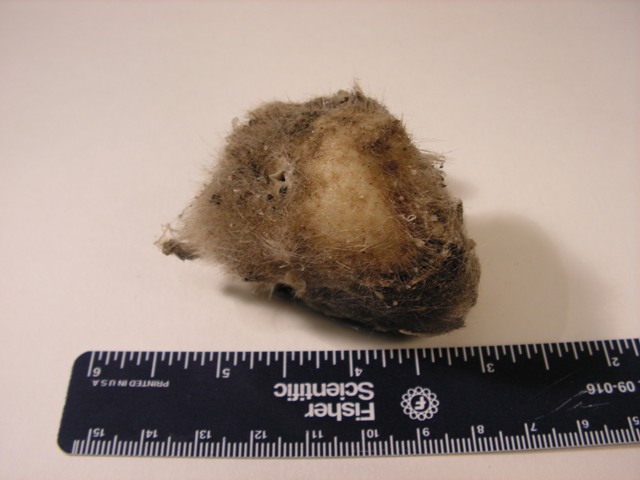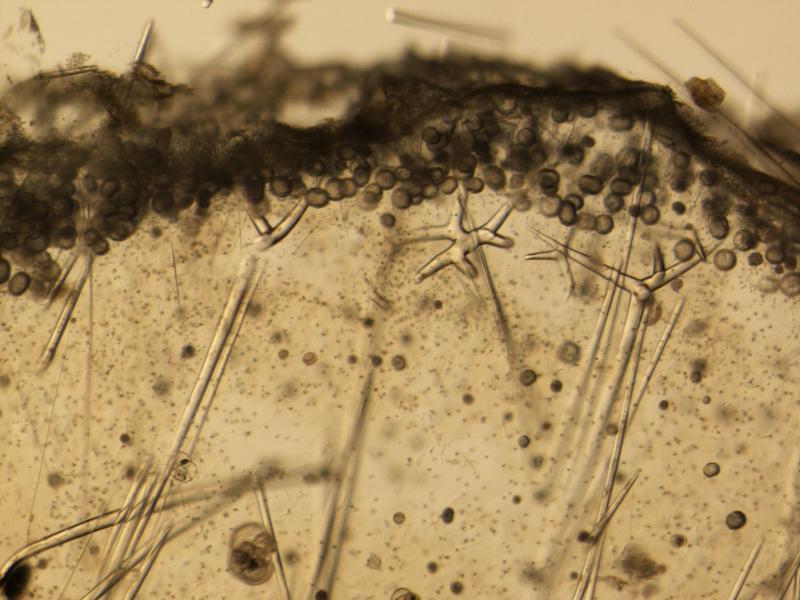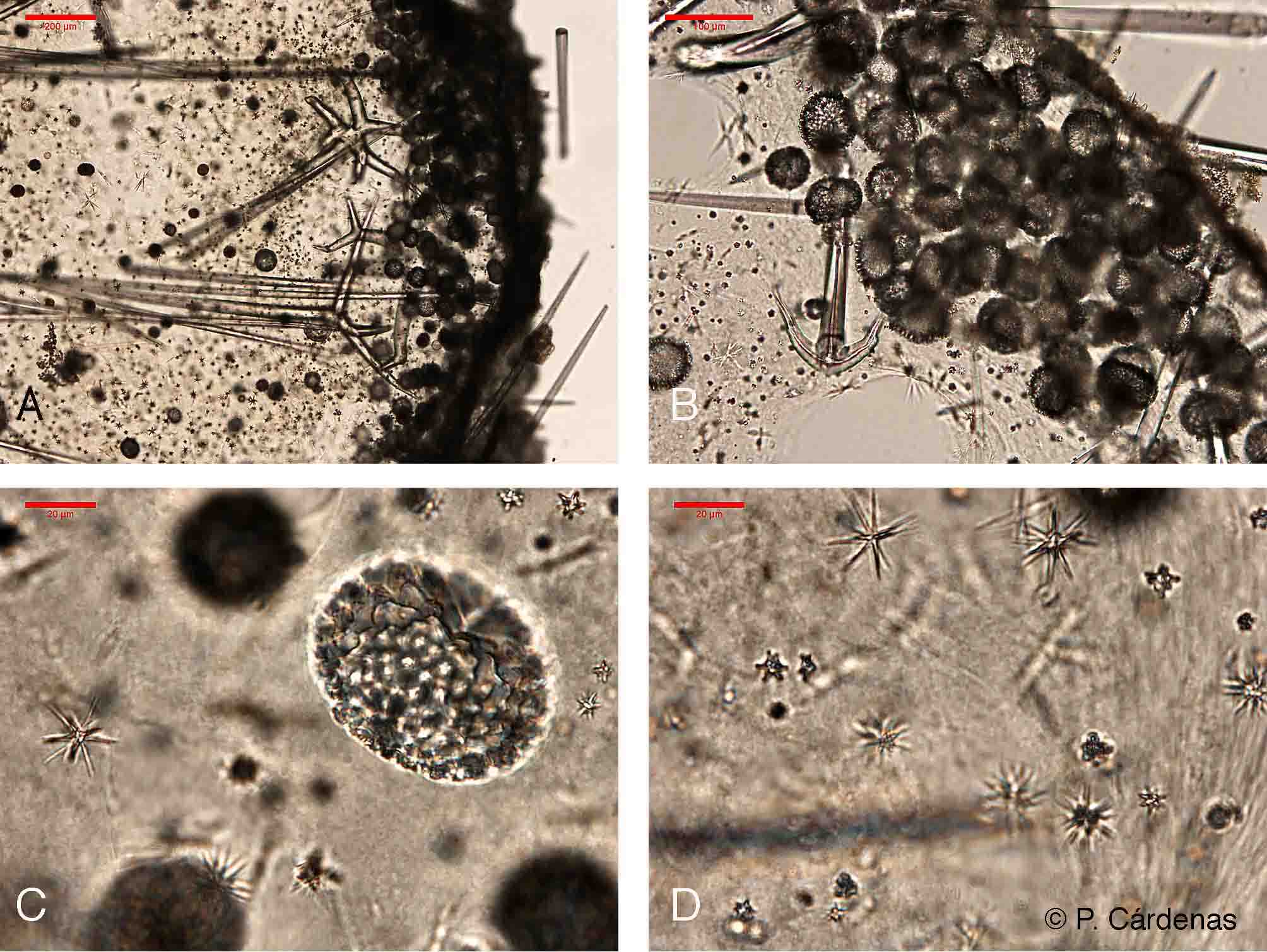| Reference |
| Geodia hentscheli |
| 2007-07-14 |
| Greenland Sea, Schultz Massive Seamount (73° 47' 23'' N, 7° 40' 25'' E) |
| 1997m |
| Christoffer Schander |
| ZMBN 77925 |
| Museum of Bergen, Norway |
| Ethanol |
| Paco Cárdenas |
Morphological description (show/hide)
| massive, globular | | whittish | | whittish | | minute uniporal oscules in preoscule cavity. | | slightly compressible, hispid surface. | | strongly hispid | | Radial skeleton. Triaenes are disposed radially near the surface. Oxyasters can be found throughout the choanosome. | | Ectocortex of asters, endocortex of sterrasters. | | (min-average-max, N=30 unless stated otherwise) (a) oxeas I, straight or bent, length: 2575-5175 µm, width: 30 µm (N=2). (b) oxeas II, usually straight (sometimes slightly bent), sometimes slightly centrotylote, length: 142-187-225 µm, width: 5-9-12 µm. (c) ortho- to dichotriaenes, rhabdome length: 252-1159-1650 µm (N=9), width: 22-47-74 µm (N=25); orthotriaene clad: 244-361-470 µm long (N=15); protoclade: 60-140-300 µm (N=7); deuteroclade: 96-156-240 µm (N=8). (d) anatriaenes, rhabdome length: more than 2575 µm; width: 20-30 µm (N=4); clad length: 115-176 µm (N=3). (e) meso/protriaenes, rhabdome length: more than 1950 µm; width: 17 µm; clad length: 87 µm; central clad length: 148 (N=1). | | (min-average-max, N=30) (f) sterrasters, usually spherical, some are very irregular, 64-69-79 µm in diameter. (g) strongylasters (to sphero-strongylasters), spiny, 6-9-11 µm in diameter. (h) oxyasters, spiny, with a more or less inflated centrum, with 4-20 rays, diameter: 12-21-30 µm. |
|
Reference (show/hide)
| Cárdenas, P., Rapp, H.T., Schander, C. & Tendal, O.S. (2010) Molecular taxonomy and phylogeny of the Geodiidae (Porifera, Demospongiae, Astrophorida) — combining phylogenetic and Linnaean classification. Zoologica Scripta, 39, 89-106. |
| Cárdenas, P., Rapp, H.T., Klitgaard, A.B., Best, M., Thollesson, M. & Tendal, O.S. (2013) Taxonomy, biogeography and DNA barcodes of Geodia species (Porifera, Demospongiae, Tetractinellida) in the Atlantic boreo-arctic region. Zoological Journal of the Linnean Society, DOI: 10.1111/zoj.12056. |
|





